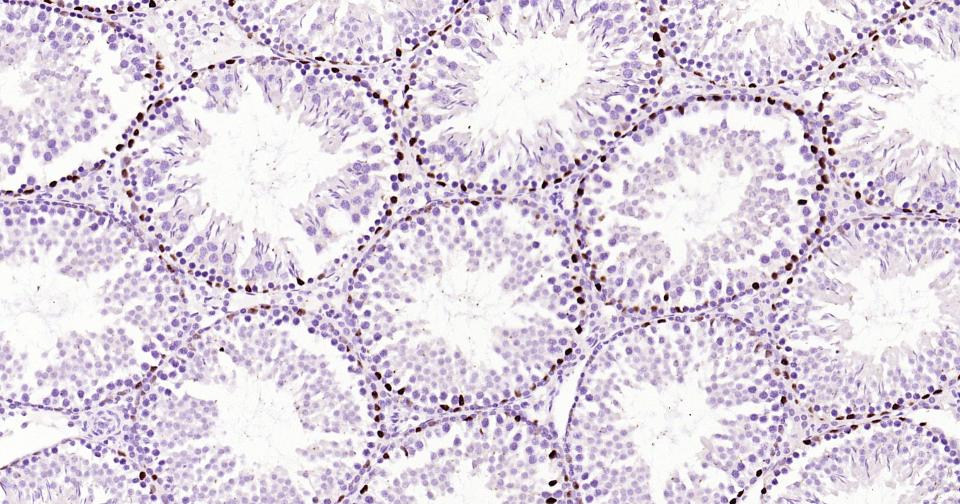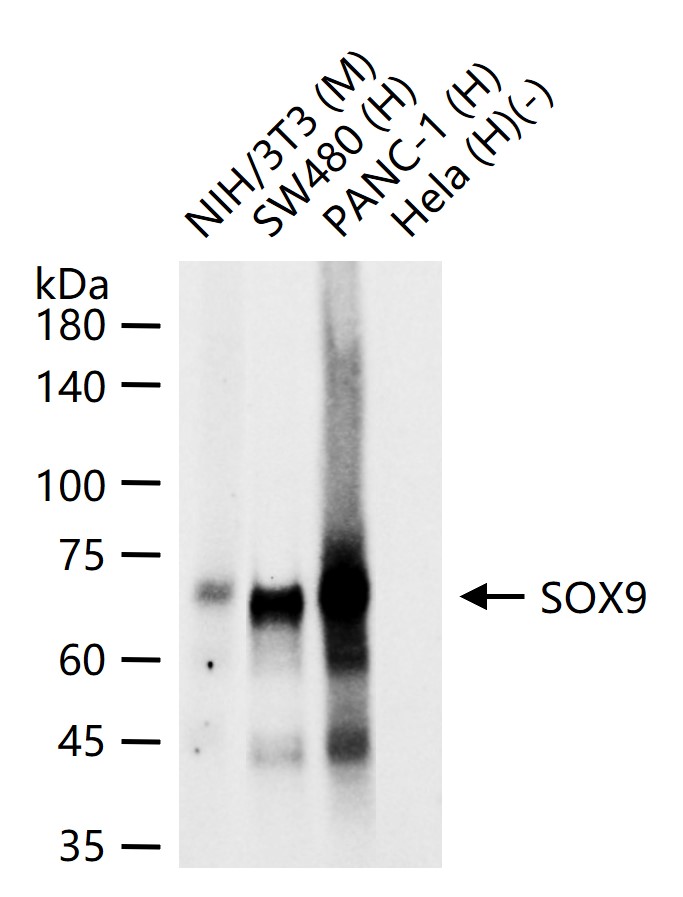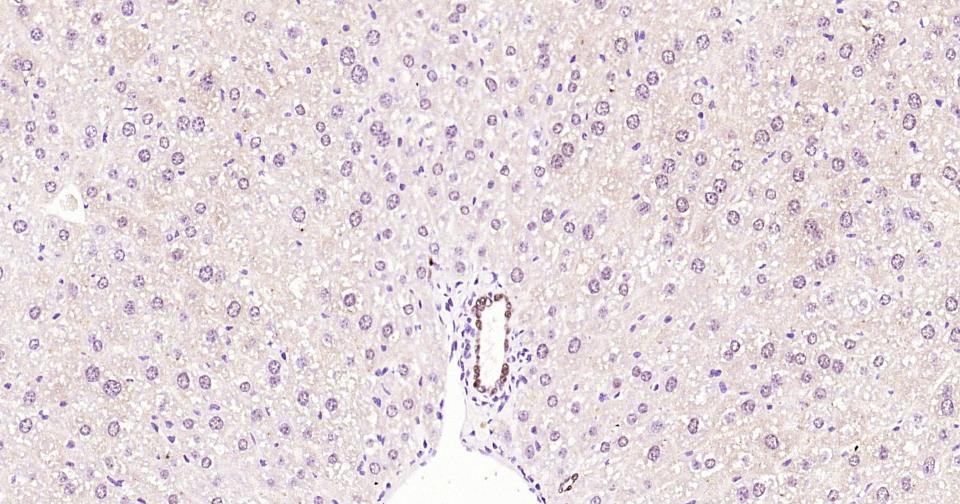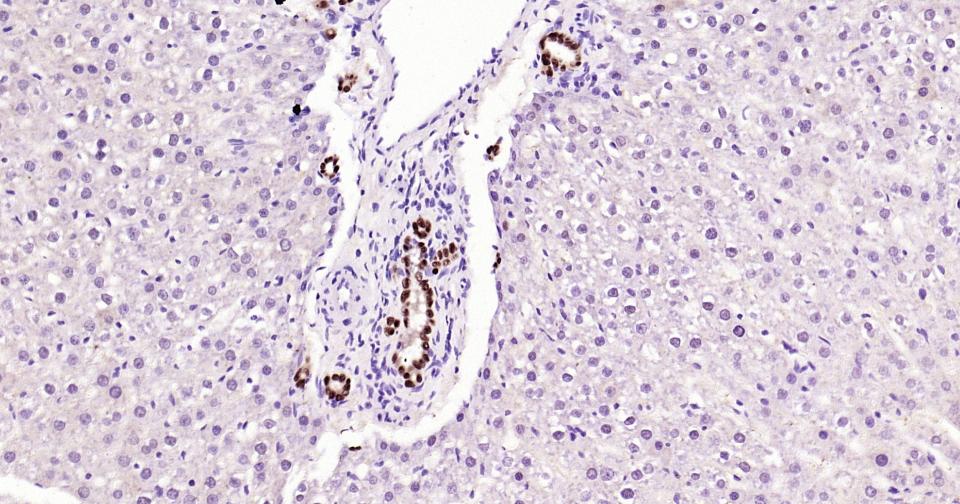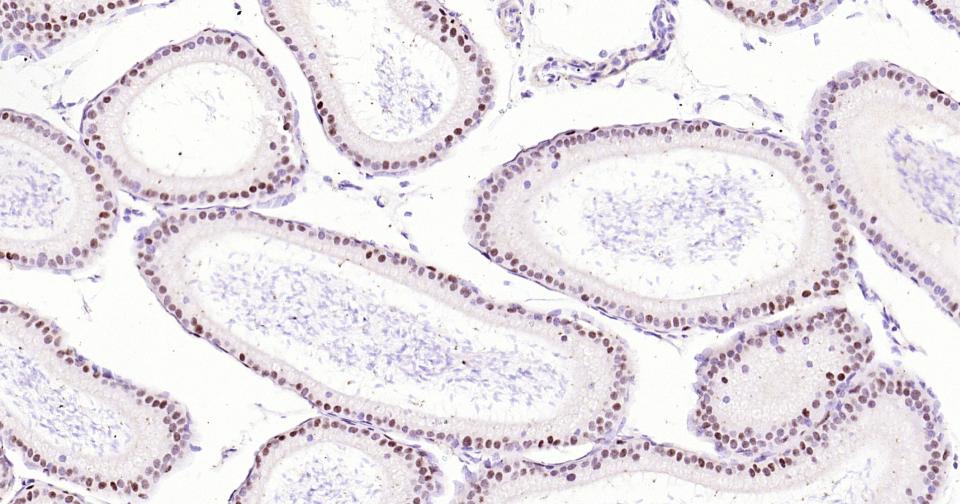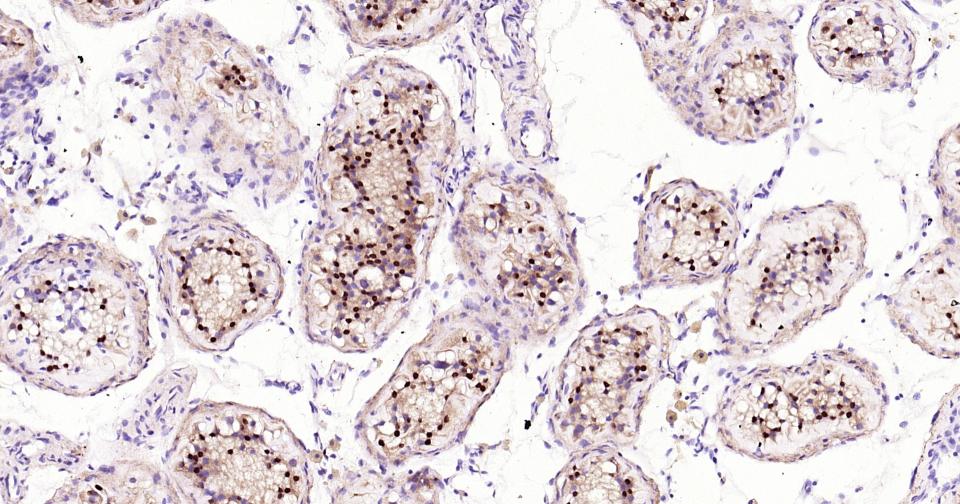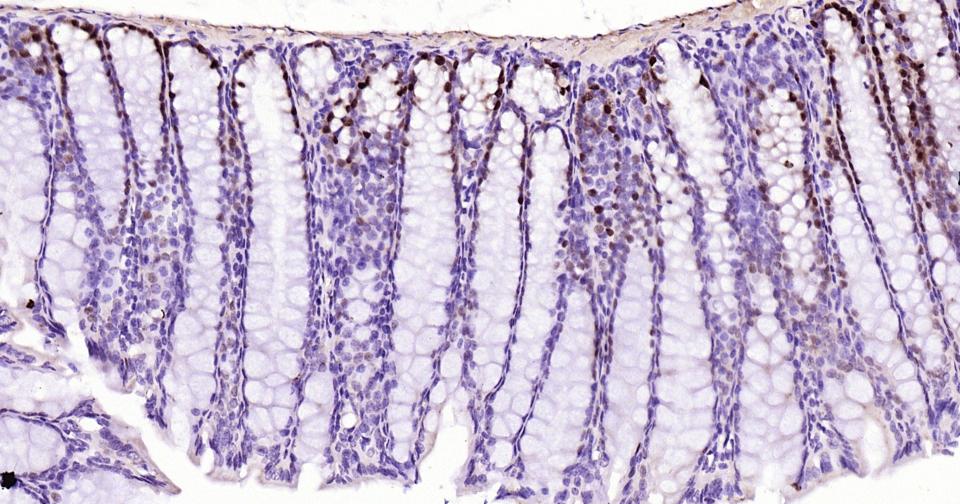SOX9 Recombinant Rabbit mAb
SOX9 Recombinant Rabbit mAb
- 产品详情
- 实验流程
- 背景知识
Application
| WB, IHC-P, IHC-F, IF |
|---|---|
| Reactivity | Human |
| Host | Rabbit |
| Clonality | Recombinant |
| Calculated MW | 56 KDa |
| Physical State | Liquid |
| Immunogen | A synthesized peptide derived from human SOX9 |
| Epitope Specificity | 150-300/509 |
| Isotype | IgG |
| Purity | affinity purified by Protein A |
| Buffer | 0.01M TBS(pH7.4) with 1% BSA, 0.02% Proclin300 and 50% Glycerol. |
| SUBCELLULAR LOCATION | Nucleus. Cytoplasm (By similarity). Note=Restricted to the nucleus of Sertoli-like cells in the testis, but localizes to the cytoplasm of previtellogenic oocytes in the ovary before being translocated into the nucleus of vitellogenic oocytes (By similarity). |
| SIMILARITY | Contains 1 HMG box DNA-binding domain. |
| SUBUNIT | Interacts with the sumoylation factors ube2i/ubc9 and sumo1. |
| Post-translational modifications | Sumoylated. Lys-365 is the major site of sumoylation, although sumoylation at Lys-61 also occurs. Sumoylation plays a key role in regulating formation of the neural crest and otic placode. |
| DISEASE | Defects in SOX9 are the cause of campomelic dysplasia (CMD1) [MIM:114290]. CMD1 is a rare, often lethal, dominantly inherited, congenital osteochondrodysplasia, associated with male-to-female autosomal sex reversal in two-thirds of the affected karyotypic males. A disease of the newborn characterized by congenital bowing and angulation of long bones, unusually small scapulae, deformed pelvis and spine and a missing pair of ribs. Craniofacial defects such as cleft palate, micrognatia, flat face and hypertelorism are common. Various defects of the ear are often evident, affecting the cochlea, malleus incus, stapes and tympanum. Most patients die soon after birth due to respiratory distress which has been attributed to hypoplasia of the tracheobronchial cartilage and small thoracic cage. Defects in SOX9 are the cause of 46,XX sex reversal type 2 (SRXX2) [MIM:278850]. SRXX2 is a condition in which male gonads develop in a genetic female (female to male sex reversal). |
| Important Note | This product as supplied is intended for research use only, not for use in human, therapeutic or diagnostic applications. |
| Background Descriptions | May be involved in chondrogenesis (cartilage development) during bone formation. Unlikely to play a role in sex determination but may function during testicular and ovarian differentiation (By similarity). Transcriptional activator. Acts early in neural crest formation, functioning redundantly with the other group E Sox factors sox8 and sox10 to induce neural crest progenitors. Induces sox10 expression downstream of wnt-signaling. Principally involved in development of the cranial neural crest, which is fated to form skeletal elements. Also required for otic placode specification during inner ear development. |
| Target/Specificity | From mid-gastrula (stage 10.5-11), expressed in a ring around the blastopore, with expression decreasing toward the dorsal side. At stage 12, expression around the blastopore decreases and begins to increase lateral to the neural plate in the presumptive neural crest, where expression dramatically increases around stage 14. Also expressed in the otic placode as early as stage 13/14. By the tailbud stage expression is restricted to the otic cup and then throughout the otic vesicle, with more intense staining at the dorsal-most region, the prospective region of the semicircular canals and endolymphatic duct. At the early tailbud stage (stage 23), expressed in migrating cranial neural crest cells and in the trunk neural crest. Also expressed in the genital ridges, developing eye, nasal placode and prospective pineal gland. Around stage 25, expression is down-regulated in the trunk neural crest but persists in the migrating cranial crest cells as they populate the pharyngeal arches, otic placode, developing eye, genital ridges and notochord. By stage 31, expression remains strong in the pharyngeal arches. Also expressed in the pancreas; first expressed at stage 25 in the pancreatic anlagen, dorsally in diverticulum. As development proceeds, expression continues in pancreatic tissue, being restricted to ventral and dorsal pancreatic buds. |
|---|---|
| Dilution | WB=1:500-2000,IHC-P=1:100-500,IF=1:100-500,IHC-F=1:100-500 |
| Format | 0.01M TBS(pH7.4) with 1% BSA, 0.09% (W/V) sodium azide and 50% Glyce |
| Storage | Store at -20 °C for one year. Avoid repeated freeze/thaw cycles. When reconstituted in sterile pH 7.4 0.01M PBS or diluent of antibody the antibody is stable for at least two weeks at 2-4 °C. |
Research Areas
For Research Use Only. Not For Use In Diagnostic Procedures.
Application Protocols
Provided below are standard protocols that you may find useful for product applications.
BACKGROUND
This product as supplied is intended for research use only, not for use in human, therapeutic or diagnostic applications.
终于等到您。ABCEPTA(百远生物)抗体产品。
点击下方“我要评价 ”按钮提交您的反馈信息,您的反馈和评价是我们最宝贵的财富之一,
我们将在1-3个工作日内处理您的反馈信息。
如有疑问,联系:0512-88856768 tech-china@abcepta.com.























 癌症的基本特征包括细胞增殖、血管生成、迁移、凋亡逃避机制和细胞永生等。找到癌症发生过程中这些通路的关键标记物和对应的抗体用于检测至关重要。
癌症的基本特征包括细胞增殖、血管生成、迁移、凋亡逃避机制和细胞永生等。找到癌症发生过程中这些通路的关键标记物和对应的抗体用于检测至关重要。 为您推荐一个泛素化位点预测神器——泛素化分析工具,可以为您的蛋白的泛素化位点作出预测和评分。
为您推荐一个泛素化位点预测神器——泛素化分析工具,可以为您的蛋白的泛素化位点作出预测和评分。 细胞自噬受体图形绘图工具为你的蛋白的细胞受体结合位点作出预测和评分,识别结合到自噬通路中的蛋白是非常重要的,便于让我们理解自噬在正常生理、病理过程中的作用,如发育、细胞分化、神经退化性疾病、压力条件下、感染和癌症。
细胞自噬受体图形绘图工具为你的蛋白的细胞受体结合位点作出预测和评分,识别结合到自噬通路中的蛋白是非常重要的,便于让我们理解自噬在正常生理、病理过程中的作用,如发育、细胞分化、神经退化性疾病、压力条件下、感染和癌症。
